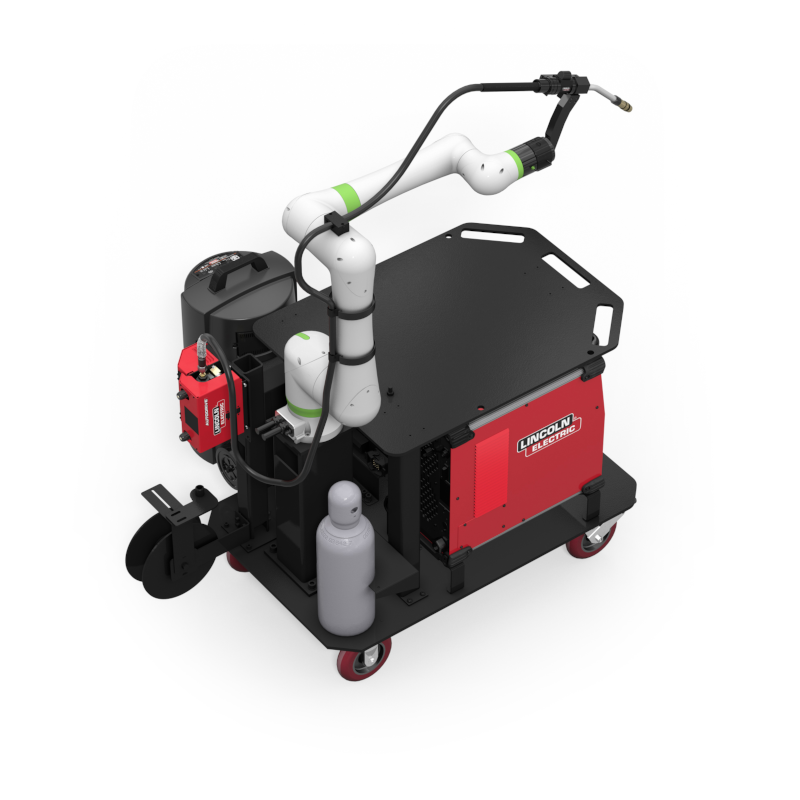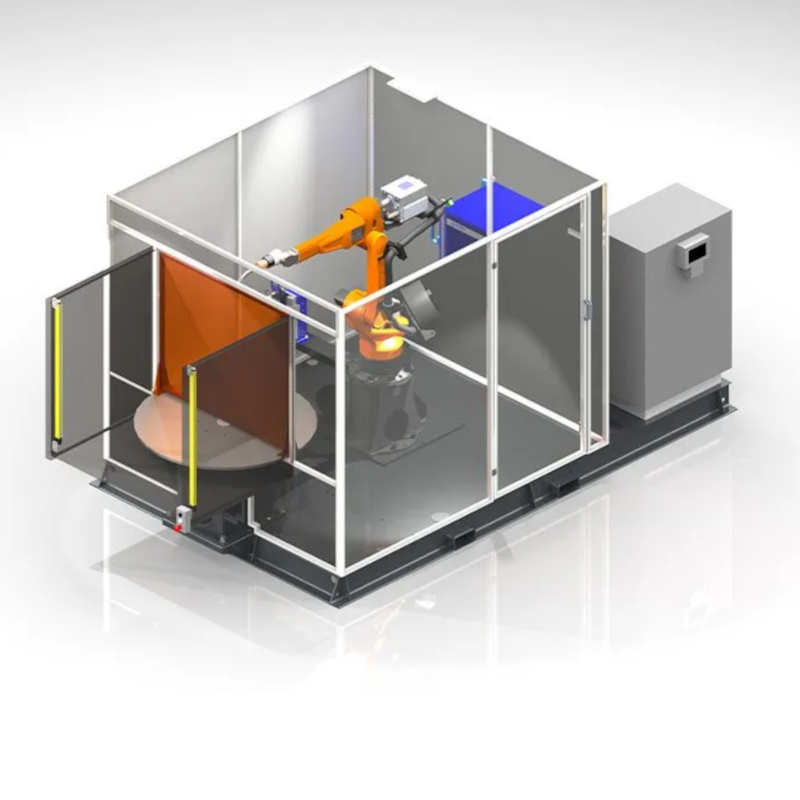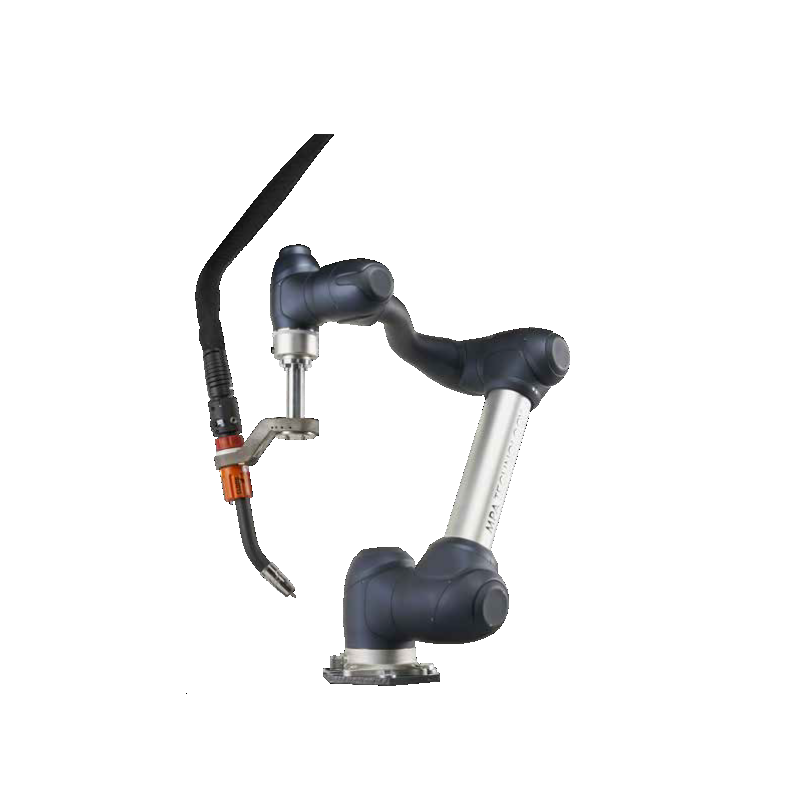Robotic Welding
Robotic welding, Welding Robots and Welding Cobots
Robotic welding is a type of high production automated welding. A typical robot welding cell includes a robotic arm, a welding power source, a wire feeder, a work surface and a protective enclosure.
The automotive industry is amongst the most prevalent users of welding robots. Customer expectations when purchasing a car are extremely high. Therefore, car manufacturers utilise industrial robots to ensure consistency, speed of production and, most important, high quality welds with sufficient strength to ensure safety.
For example: Tesla, the industry leading manufacturer of electric vehicles, deploy KUKA welding robots within their production facilities. An image of their robotic welding setup can be seen below.
The robots pictured above are fully automated. This means that they are completely free of any requirements for human interaction. The only time humans will interact with the robots is during maintenance or repair.
These kinds of robotic welding cells are the future of high volume production welding. Reason #1 being that skilled workers are becoming harder and harder to find. Reason #2 being that, nowdays, consumers expect higher quality from the product they purchase. Robotic welding operations for applications such as seam welding, spot welding and production welding ensure welding quality that no human can rival.
Repeatable welds can be carried out time and again with perfect consistency in terms of weld travel speed, CTTWD (contact tip to work distance) and travel angle.
With manual welding all 3 of these important weld "components" are typically somewhat inconsistent. Why? Simply put, humans are not perfect; they can struggle to maintain consistency in these areas as we do not have perfect control over our muscles and movements.
Robots, on the other hand, utilise a set of precision motors to control their movements. The motors are programmed to move in exact repeatable motions to provide the high level of precision that is expected from such an investment.
In addition to fully automated robots, collaborative welding robots are becoming very popular in the welding industry. These are robots that require some level of human interaction whilst still reducing the level of skill required to carry out such welding tasks. How can this kind of welding automation assist in the industry?
Welding cobots for semi automated welding applications
Welding cobots, otherwise known as collaborative robots, are helping to fill the skills gap in the welding industry.
Skilled welding personell are becoming harder and harder to find nowdays. This is due to an increase in young people taking up "white collar" careers, in favour of "blue collar" careers, such as welding.
This issue is causing a severe shortage of skilled welders. In what way can the industry combat this skills gap? By means of implementing automation!
Cobots are a type of robot that allows a human to manually manipulate it's "arm", showing it points on a job where it needs to weld. The cobot can then follow the path generated by the humans input. On repeatable welding jobs this allows the machine to produce perfect results, every time.
Cobots are typically programmed via a combination of robotic arm maniplations and a "teaching pendant". The operator can physically move the robotic arm across the weld seam. By pressing the button to alert the cobot that each time the button is clicked it is at a point it needs to reach in it's weld cycle. This physical movement then translates into motor movements for the robotic arm.
The control pendant is then used to control the welding parameters such as voltage, wire feed speed, travel speed, crater fill, oscillation and much more.
Cobot programming does have a slight learning curve. However, the time taken to learn how to programme a collaborative robot is much less than the time it takes to become a skilled welder that can produce repeatable perfect welds.
In addition to producing perfect results you will also find that automating jobs with repeatable welds makes for an increase in productivity. This is due to robots not needing breaks. It will also lead to an overall long-run saving, as robots are not entitled to wages. Finally, a most noteworthy, a potential increase in orders due to the high quality work that is produced by the cobot welder.
Which welding processes can cobots handle?
Robotic welding processes include MIG welding, TIG welding & plasma welding. Our welding cobots can be supplied with power sources suitable for most arc welding processes. At the moment we do not offer a cobot capable of laser welding but research and development is being carried out in this area.
Which welding cobot is best?
Welding Supplies Direct work with a number of cobot welder manufacturers. However, our cobot of choice is the Lincoln Electric Linc-Cobot which is known by many in the industry as the highest quality & safest choice for automating welding processes.
The standard LINC-COBOT package includes:
- FANUC CRX-10iA/L Collaborative Arc Welding Robot Arm
- Power Wave® R450 Power Source
- AutoDrive® 4R100 Wire Feeder
- Magnum® PRO Air-Cooled Robotic Torch
- Heavy-Duty Caster System
- Kickstand Cart Stabilize
- 8 years of robotic arm maintenance from FANUC
This package can be designed to suit your exact production needs. Call us on 01952 582 260 to discuss your requirements.
Welding cobot demonstration
Welding Supplies Direct, in collaboration with our supply partners, are able to offer free, no obligation on-site demonstrations on our range of collaborative welding robots.
Also, we are able to invite you to Lincoln Electric HQ, in Aston, Sheffield UK. At Lincoln Electric, we can demonstrate the full capabilities of the LINC-COBOT system.
The LINC-COBOT in Sheffield is set up exactly how it would be in a production environment so you can see how it would work in its "natural habitat".
Welding robot hire
Welding robots require a significant outlay to purchase. Oftentimes, the cost is prohibitive if the machine will not get constant use. Therefore, we have partnered with Key Plant Automation and Cloos UK to offer welding robots and welding cobots on a week-by-week hire basis.
Hiring a robotic welding solution can help with cost reduction, as well as allowing for short-term contracts to be accepted without the need for large capital outlay.
Example cost prices:
Cobot rental: ~£950 excluding VAT per week + delivery and setup costs.
Compact robotic welding cell rental: ~£1,200 excluding VAT per week + delivery and setup costs.
As usual, we will advise and assist at every step of the way when discussing hire of a welding cobot or welding robot system. Our experts can assist with whatever you require.
Call us today on 01952 582 260 to discuss welding robot hire with one of our robotic welding experts.




